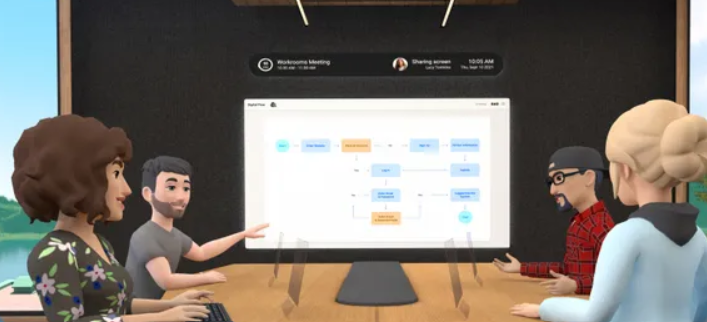Metaverse is a decentralized platform that allows miners to earn rewards for validating transactions on the Metaverse blockchain. Miners play an important role in maintaining the Metaverse network and are compensated for their work with Metaverse (MTV) tokens. To start mining, people need to invest in mining hardware and software. Metaverse miners can use your hardware and software to connect to the Metaverse network and start validating transactions.
This article addresses the question of how to mine the Metaverse and how it can be profitable for miners.
An Overview of Metaverse Mining
Metaverse aims to provide a new digital world of shared value, where everyone can own their identities and data, and miners help protect this ecosystem. It is similar to other forms of cryptocurrency mining in that miners work to validate transactions and add new blocks to the blockchain. In exchange for their work, they are rewarded with coins. It requires specialized hardware and software, and can be done solo or in a pool. Miners also need to have a certain amount of Metaverse Coins to start mining.
When a miner successfully validates a transaction, they are rewarded with MTV tokens. The number of MTV Tokens earned per transaction depends on the complexity of the transaction and the overall difficulty. In addition to transaction fees, they also receive block rewards, which are paid when a new block is added to the Metaverse blockchain. Block rewards are currently set at 10 MTV per block and are halved every two years. As a result, Metaverse mining can be a profitable activity for those willing to invest in the necessary hardware and software.
A Step-by-Step Guide to Mining the Metaverse
Whether you’re new to blockchain or a seasoned pro, Metaverse is a great platform to start mining on. The following are the steps on how to get started.
First, you will need to create a wallet. You can do this by downloading the official Metaverse wallet from the website or by using an online service like BlockEQ. Once you’ve set up your wallet, you’ll need to fund it with some ETP. You can do this by buying ETP on an exchange or by receiving it from another user.
Once your wallet is funded, you are ready to start mining! To do this, you will need to download the miner from the website. Once you have installed the miner, open it and enter your wallet address. Then select the number of threads you want to use and click “Start Mining”. That is all! You are now mining ETP on the Metaverse blockchain.
Proof-of-Work (PoW)
The Metaverse ETP proof-of-work system/protocol traces its origins to anti-spam email systems developed in the mid-1990s. Prior to the creation of bitcoin in 2009, the concept never found a mainstream really practical cause. This protocol is used by Bitcoin itself in the blockchain that records Bitcoin transactions, and is largely responsible for the recent increase in Bitcoin mining activity.
This premise is a challenge and a demonstration (or answer). The difficulty lies in completing a transaction, a kind of cryptographic puzzle. A computer used by the miners proves that the puzzle has been solved, allowing the trade to take place. That is evidence of the efforts of the miners and the fact that they contributed hardware to the transaction verification process. A miner’s Metaverse ETP payout increases in proportion to the amount of hashing power that contributes to the validation of transactions.
PoW power consumption is a major issue as miners have no choice but to use more powerful ASIC equipment. As the value of bitcoin has risen, various mining farms have been established in different places.
Why Should I Mine Metaverse?
Metaverse’s flagship feature, Blockchain-as-a-Service, provides a compelling case for starting mining (BaaS) operations. Doing so breaks the linear correlation between blockchain decentralization and similar applications. All this variety is possible thanks to the oracle system. Using the internet as a gateway, the Metaverse platform provides cryptocurrency and digital assets, allowing your apps to earn profits at almost no cost. Oracles, which humans can operate, are another possibility. For all the information on mining Metaverse, keep reading.

Best Way To Mine Metaverse
Crowd mining is the most efficient method. When miners collaborate to solve blocks faster as part of a group, everyone receives a reward based on the relative difficulty of their submitted actions. Of course, the hardware is also crucial in this case. We’ve done the legwork for you, and the best hardware recommendations are below. First of all, ASIC (Application Specific Integrated Circuit) machines are the most efficient machinery for mining. As of now, everything seems to be fine.
Now you must realize that cloud mining presents another excellent option for acquiring cash. If you want to know more about it, keep reading!
Final Word
If you want to mine Metaverse ETP, think carefully about whether or not your setup will be profitable before you start. The profit potential when trading ETPs is very susceptible to market forces and the number of miners. Think how profitable it would be to set up a mining rig at the current ETP price. The most effective hardware for mining would be ASICs, but they are already prohibitively expensive for most people.
If you’re mining Metaverse ETP on a computer, a graphics processing unit (GPU) won’t produce many hashes per second, but it might be useful to get things going. USD hash rate revenue can be calculated using mining profitability charts. Electricity costs are also accounted for within these graphs. Since the difficulty of mining increases as the number of miners increases and the need for a higher hash rate increases, it is impossible to predict how much the mining industry will ultimately cost. Your contribution to the process of creating new blocks on the blockchain network is measured in terms of your hash rate. We’re talking serious “block time” here.












